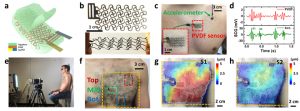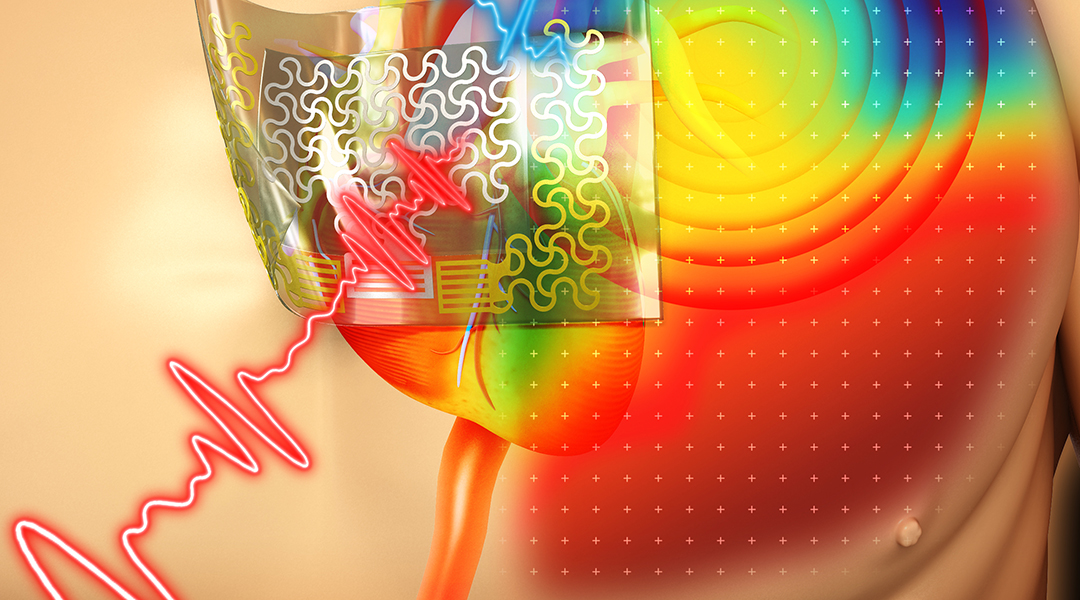Cardiovascular diseases (CVD) are the leading cause of death worldwide. They are disorders of the heart, blood vessels, and arteries, which include coronary heart disease, cerebrovascular disease, rheumatic heart disease, atherosclerosis, and others. Four out of five CVD deaths are due to heart attacks and strokes.
To tackle this problem, a wearable device has been developed—dubbed an “e-tattoo”—to perform continuous cardiovascular monitoring for telemedicine and outpatients. The electrocardiogram (ECG) shows the best-known cardiovascular signal, which indicates the electrical activity of the heart, and thus reflects myocardial conduction. Mechano‐acoustic signals, complementing ECG signals, provide further insights into cardiovascular health. Here, Taewoo Ha and co-workers focused on local vibrations of the chest wall caused by a heartbeat, which can be recorded by seismocardiography (SCG).

The device in action.
The authors describe a system design, including the principle of SCG detection, substrate selection, system optimization, electronic tattoo characterization, and correlation between the systolic time intervals and the systolic/diastolic blood pressures. For sensing, the team utilized filamentary serpentine (FS) Au/PET electrode for ECG and FS PVDF for SCG.
The dual sensor-based approach provides a technique for noise cancellation, while the work presents a multimodal (ECG, SCG) and binodal (two chest locations) measurement strategy.
The motion artifacts have been effectively reduced by subtracting SCG signals from two adjacent filamentary serpentine PVDF sensors. In addition, Ha et al. applied a three-dimensional digital image correlation technique to map chest vibration and to identify the best location for SCG sensors.
For electromechanical characterization of the PVDF tattoo, the authors performed a tensile test for straight PVDF ribbon and FS PVDF, recorded voltage output for different strain amplitudes, and modeled the output voltage with the finite element modeling process. The effects of various substrates—including no substrate, Tegaderm film, and PET film—on skin deformation and device sensitivity were investigated. Ha and team were able to predict the sensor output given substrate stiffness. Among various substrates, the FS PVDF sensor without substrate demonstrated the best outcome.
However, the authors chose the Tegaderm-supported FS PVDF sensor, since the e-tattoo is hard to handle without the substrate.
Finally, the authors proved the applicability of an electro-mechano-acoustic cardiovascular sensing tattoo for a non-invasive blood pressure (BP) estimation, by extracting the systolic time interval (STI) from synchronous ECG and SCG signals, and correlation of STI with BP.

















